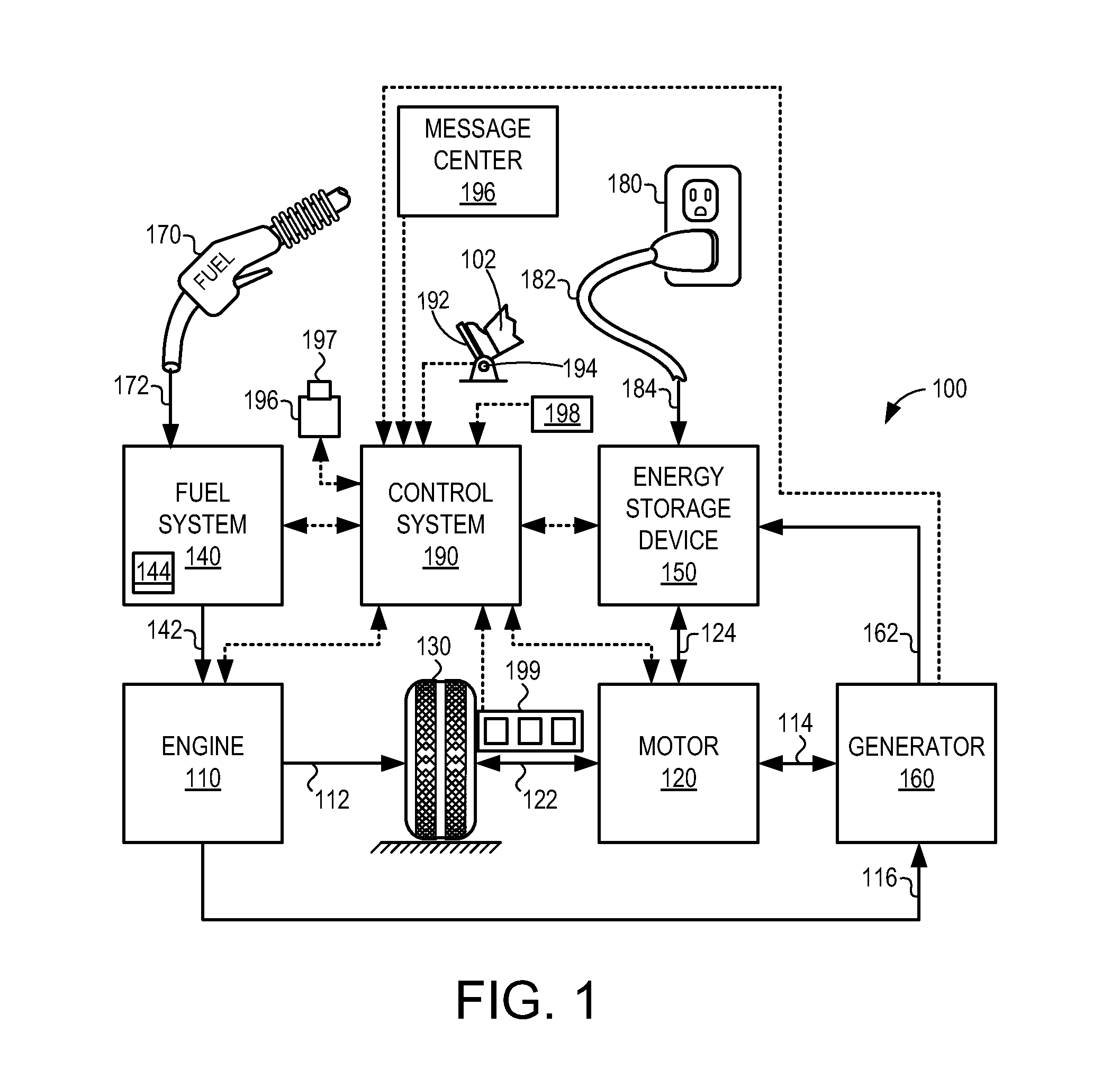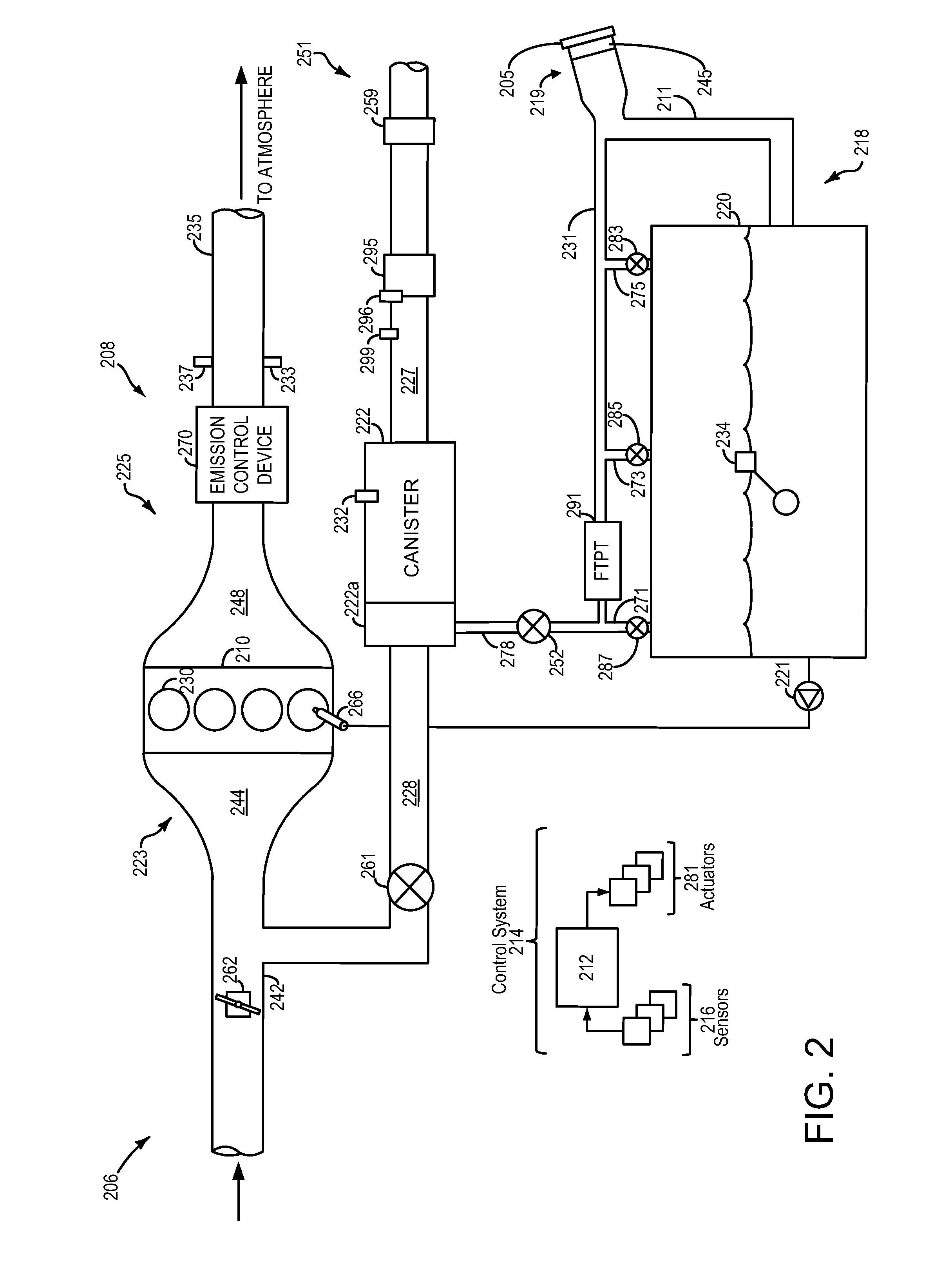Systems and methods for reducing bleed emissions
a technology of bleed emissions and systems, applied in the direction of combustion air/fuel air treatment, electric control, instruments, etc., can solve the problems of limited airflow through the canister, inability to completely clear the contents of limited opportunities for purging the fuel vapor canister, etc., to achieve the effect of reducing the bleed emissions of the fuel system, and reducing the cost of bleed emissions
- Summary
- Abstract
- Description
- Claims
- Application Information
AI Technical Summary
Benefits of technology
Problems solved by technology
Method used
Image
Examples
Embodiment Construction
[0023]This detailed description relates to systems and methods for reducing bleed emission in fuel systems. Specifically, this description relates to systems and methods for redistributing fuel vapor within a fuel vapor canister during a vehicle-off condition. The fuel vapor canister may be included in a plug-in hybrid vehicle (PHEV), such as the PHEV schematically depicted in FIG. 1. The fuel vapor canister may be included in an evaporative emissions system coupled to a fuel system, as shown schematically in FIG. 2. The evaporative emissions system may include an evaporative leak check module (ELCM), operable in multiple conformations, such as the conformations shown in FIGS. 3A-3D. Using the systems of FIGS. 1, 2, and 3A-3D, bleed emissions may be managed by the example method shown in FIG. 4. A timeline for a bleed emissions management operation using the method of FIG. 4 is shown in FIG. 5. In some examples, the evaporative emissions system may be configured to reverse air flow ...
PUM
 Login to View More
Login to View More Abstract
Description
Claims
Application Information
 Login to View More
Login to View More - R&D
- Intellectual Property
- Life Sciences
- Materials
- Tech Scout
- Unparalleled Data Quality
- Higher Quality Content
- 60% Fewer Hallucinations
Browse by: Latest US Patents, China's latest patents, Technical Efficacy Thesaurus, Application Domain, Technology Topic, Popular Technical Reports.
© 2025 PatSnap. All rights reserved.Legal|Privacy policy|Modern Slavery Act Transparency Statement|Sitemap|About US| Contact US: help@patsnap.com



